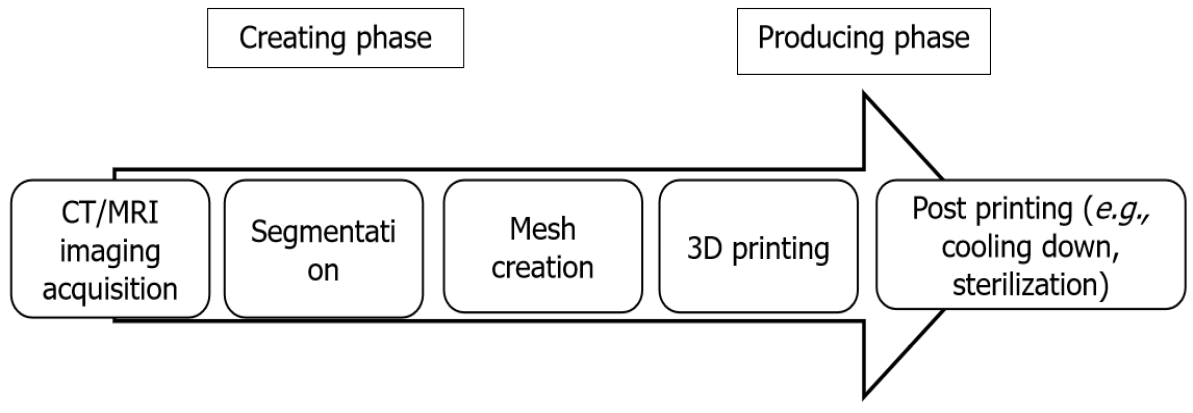Copyright
©The Author(s) 2022.
Figure 1 The process of three-dimensional printing.
A high-resolution computed tomography (CT) or magnetic resonance imaging (MRI) scan is required for the data acquisition of the limb deformity. The data are used for the segmentation process where each anatomical structure is processed as an individual entity. Mesh creation uses this data to generate the process from the segmented anatomy models into a model that only retains the specific structures that must be used for three-dimensional (3D) printing. Then, the 3D-printed model is manufactured. The post-printing process includes cooling down the created model or sterilization for the use in the operating room. CT: Computed tomography; MRI: Magnetic resonance imaging; 3D: Three-dimensional.
- Citation: Goetstouwers S, Kempink D, The B, Eygendaal D, van Oirschot B, van Bergen CJ. Three-dimensional printing in paediatric orthopaedic surgery. World J Orthop 2022; 13(1): 1-10
- URL: https://www.wjgnet.com/2218-5836/full/v13/i1/1.htm
- DOI: https://dx.doi.org/10.5312/wjo.v13.i1.1









